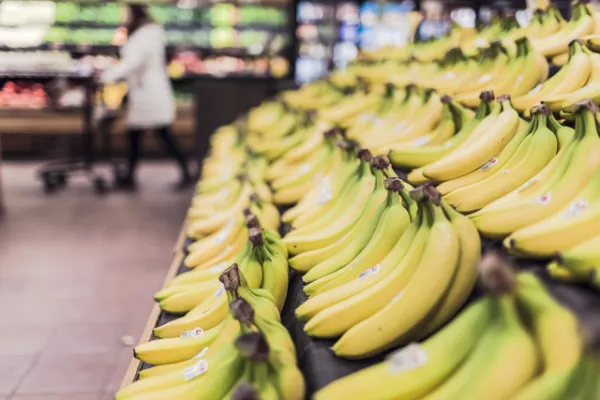Lab Banana Science Facts: Fun, Weird, and Mind-Blowing Discoveries
Welcome to Lab Banana, where science meets curiosity and creativity! Whether you’re a student, a teacher, or just someone who loves learning weird and wonderful things about the world, you’re in the right place. In this article, we dive into fascinating science facts across biology, physics, space, and everyday life — all with the fun and curious spirit that defines Lab Banana.
Let’s explore the strangest, smartest, and most surprising facts from the world of science.
Why “Lab Banana”?

Before we get into the facts, you might be wondering — why the name Lab Banana?
The banana is a surprisingly scientific fruit: it’s radioactive, it has fascinating genetics, and it’s been part of countless experiments. We think science should be fun, unexpected, and sometimes a little weird — just like a banana in a lab.
Mind-Blowing Science Facts You Didn’t Know
1. Bananas Are Slightly Radioactive
Yes, it’s true! Bananas contain potassium-40, a naturally occurring isotope that emits radiation. But don’t worry — you’d have to eat about 10 million bananas at once to experience any harm.
Lab Banana Fact: Radiation from one banana is called a “banana equivalent dose.”
2. Space Smells Like Seared Steak
Astronauts returning from spacewalks report a distinct smell clinging to their suits — often described as seared meat, welding fumes, or gunpowder. Scientists believe this comes from high-energy particles interacting with the spacecraft’s exterior.
Fun Lab Banana Twist: If you could bottle the smell of space, would it sell as a cologne?
3. Your Body Has More Microbes Than Human Cells
It’s estimated that you’re made up of more bacterial cells than human ones — roughly a 1.3:1 ratio. These microbes are crucial for digestion, immunity, and even mental health.
Lab Banana Callout: You are your own ecosystem!
4. Plants Can “Talk” to Each Other
Through root systems and fungal networks (called mycorrhizal networks), plants can share nutrients, warnings, and chemical signals. It’s like the internet for trees — sometimes called the “Wood Wide Web.”
Bananas don’t live in forests, but they’d probably text each other if they could.
5. Water Can Boil and Freeze at the Same Time
This phenomenon, known as the triple point, occurs under specific pressure and temperature conditions where all three states of matter — solid, liquid, and gas — coexist.
Lab Banana Tip: Try that in your kitchen and you’ll need a physics degree (and a vacuum chamber).
Genetics & DNA Facts That Sound Fake But Aren’t
- Humans share 60% of their DNA with bananas.
- If you unraveled all the DNA in your body, it would stretch from Earth to Pluto and back — 17 times.
- The tardigrade (aka water bear) has DNA that can survive in space, boiling water, and radiation.
Weird Facts About Space, Time, and Physics
- Time actually moves slower the closer you are to a strong gravitational field (thanks, Einstein).
- Neutron stars are so dense, a single teaspoon would weigh about 6 billion tons.
- Light doesn’t always travel at the same speed — in certain materials, it can slow down to 38 mph!
Everyday Science That Will Blow Your Mind
- Cold water boils faster than hot water under specific conditions. It’s called the Mpemba effect.
- You can start a fire with ice — by shaping it into a lens to focus sunlight.
- The human brain can generate up to 20 watts of power, enough to power a small light bulb.
How to Use These Lab Banana Facts
- Educators: Spice up your science class with weird facts that grab attention.
- Parents: Keep curious kids engaged with quick, awesome explanations.
- Bloggers/Influencers: Share one of these facts each day with a fun illustration or meme.
- Science Fans: Just nerd out like we do.
Frequently Asked Questions (FAQ) – Lab Banana Science Facts
What is Lab Banana?
Lab Banana is a fun and creative science content platform that shares weird, fascinating, and mind-blowing science facts. We focus on making science accessible, enjoyable, and sometimes a little bananas — just like our name!
Are the science facts on Lab Banana real?
Yes! All facts shared on Lab Banana are based on verified scientific research, studies, and expert sources. We present the truth — just with a playful twist.
Why are bananas considered radioactive?
Bananas contain potassium-40, a naturally radioactive isotope. While technically radioactive, the levels are extremely low and harmless to humans. It’s a fun example of how everyday items can be surprisingly scientific.
Do humans really share DNA with bananas?
Yes, humans share about 60% of their DNA with bananas. This doesn’t mean we’re part fruit — it just shows how all living organisms evolved from a common ancestor and share basic genetic building blocks.
Is it true that space smells like seared steak?
Astronauts have described a smell resembling seared meat or welding fumes when they return from spacewalks. The odor is likely caused by high-energy particles interacting with the suits and ship materials.
What’s the “banana equivalent dose” in radiation?
The “banana equivalent dose” is an informal way of explaining radiation levels by comparing them to the small amount emitted by a banana. It’s not a scientific unit but is widely used in educational contexts to explain radioactive exposure in simple terms.
Can I use Lab Banana facts in my classroom or presentation?
Absolutely! Our science facts are great for teachers, students, and speakers who want to make their lessons more engaging. Just give us a shout-out or link back to lab-banana.com when you share.
How can I stay updated on new Lab Banana science facts?
Bookmark lab-banana.com, follow us on social media, and sign up for our upcoming newsletter to get weekly doses of weird science directly to your inbox.
Can I contribute a science fact to Lab Banana?
Yes! We love community contributions. If you’ve discovered a cool science fact or want to collaborate, send us a message through our Contact page.